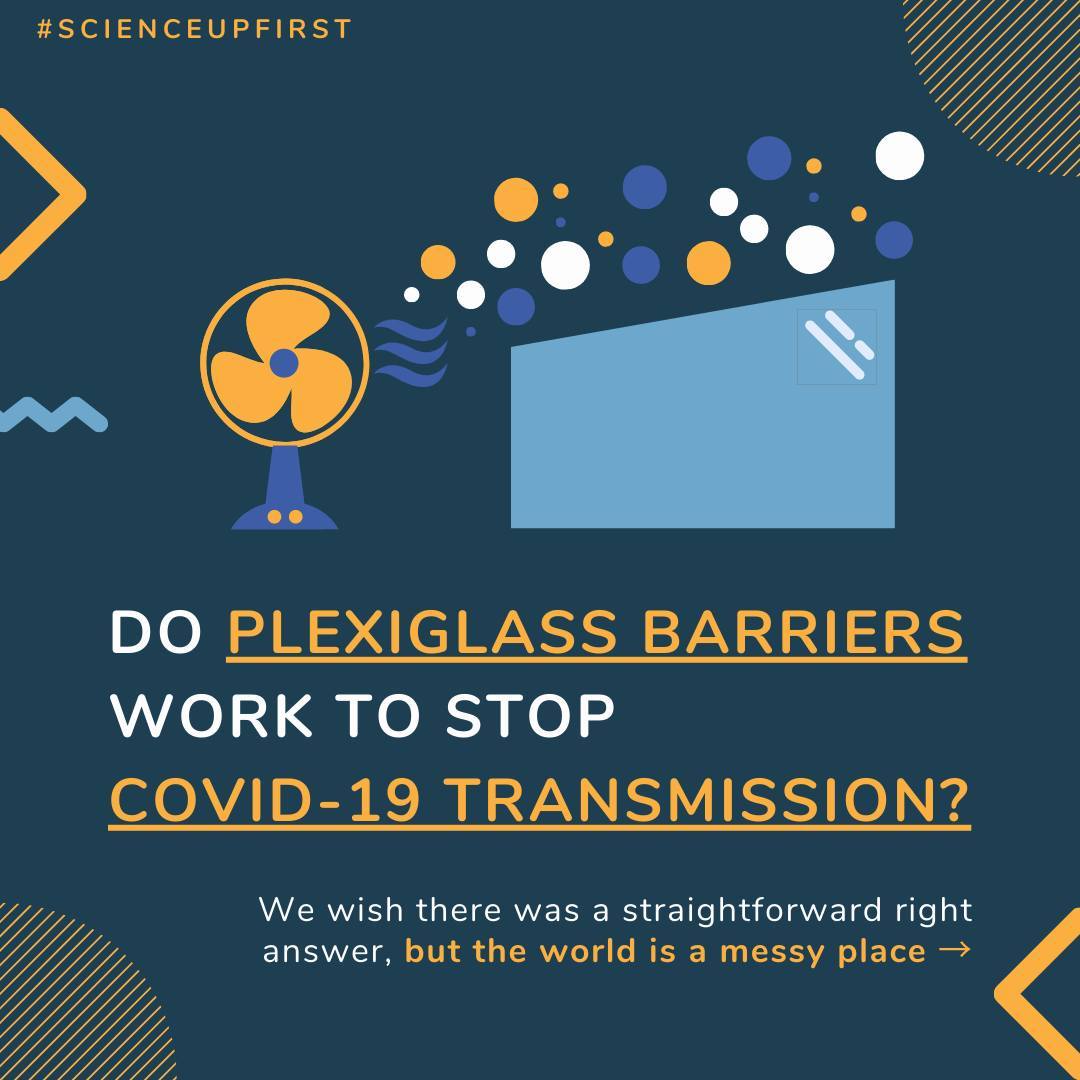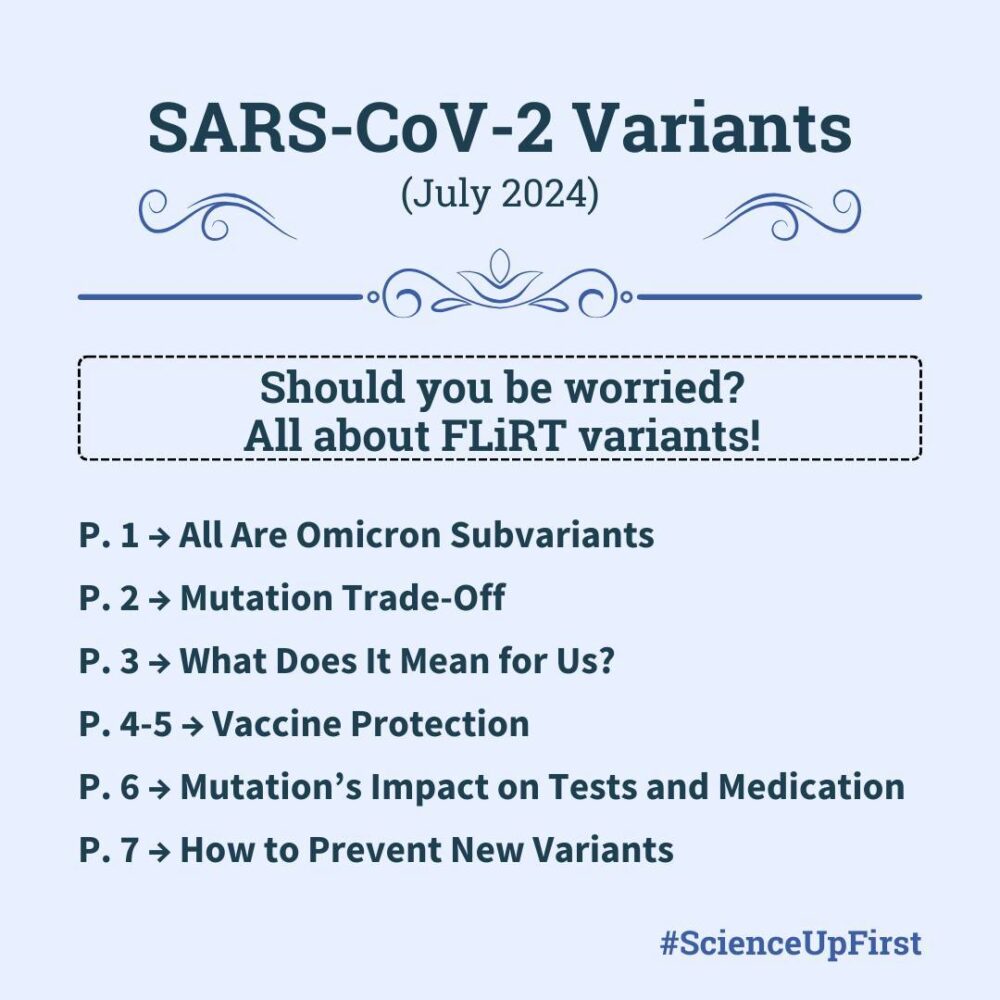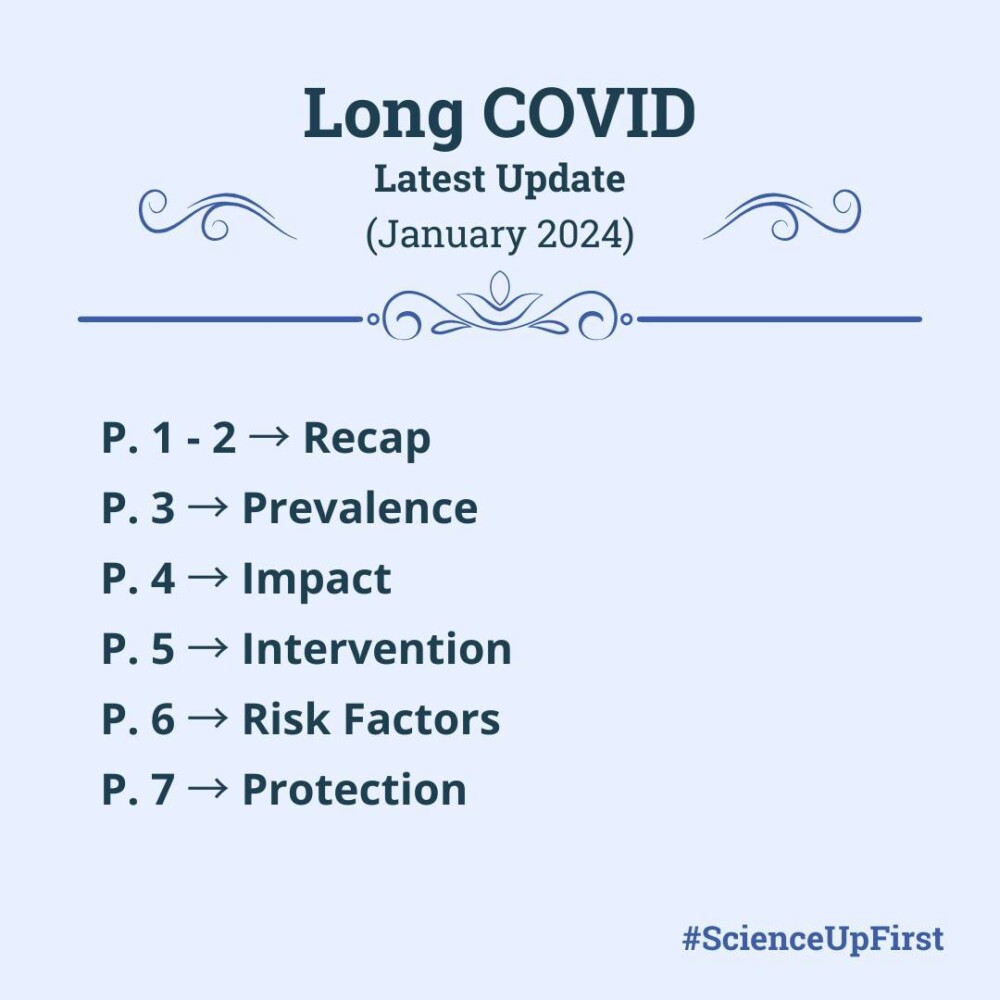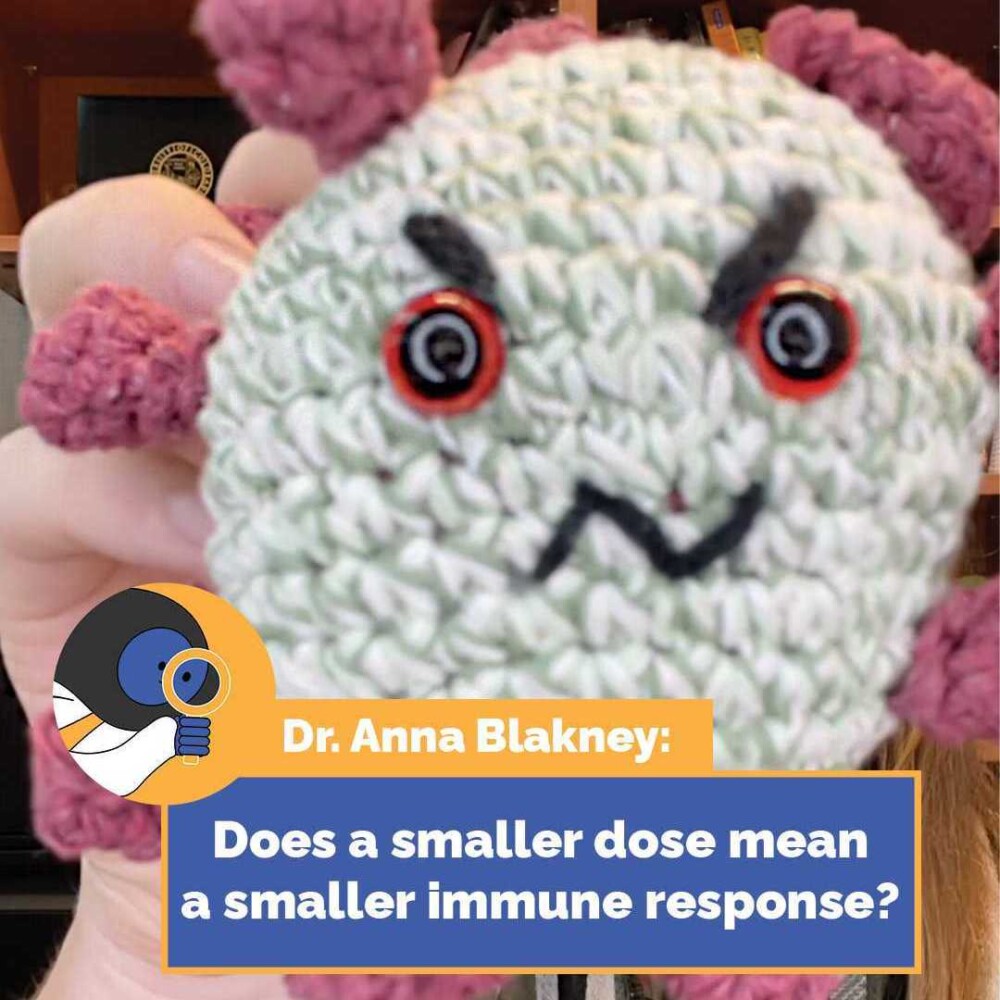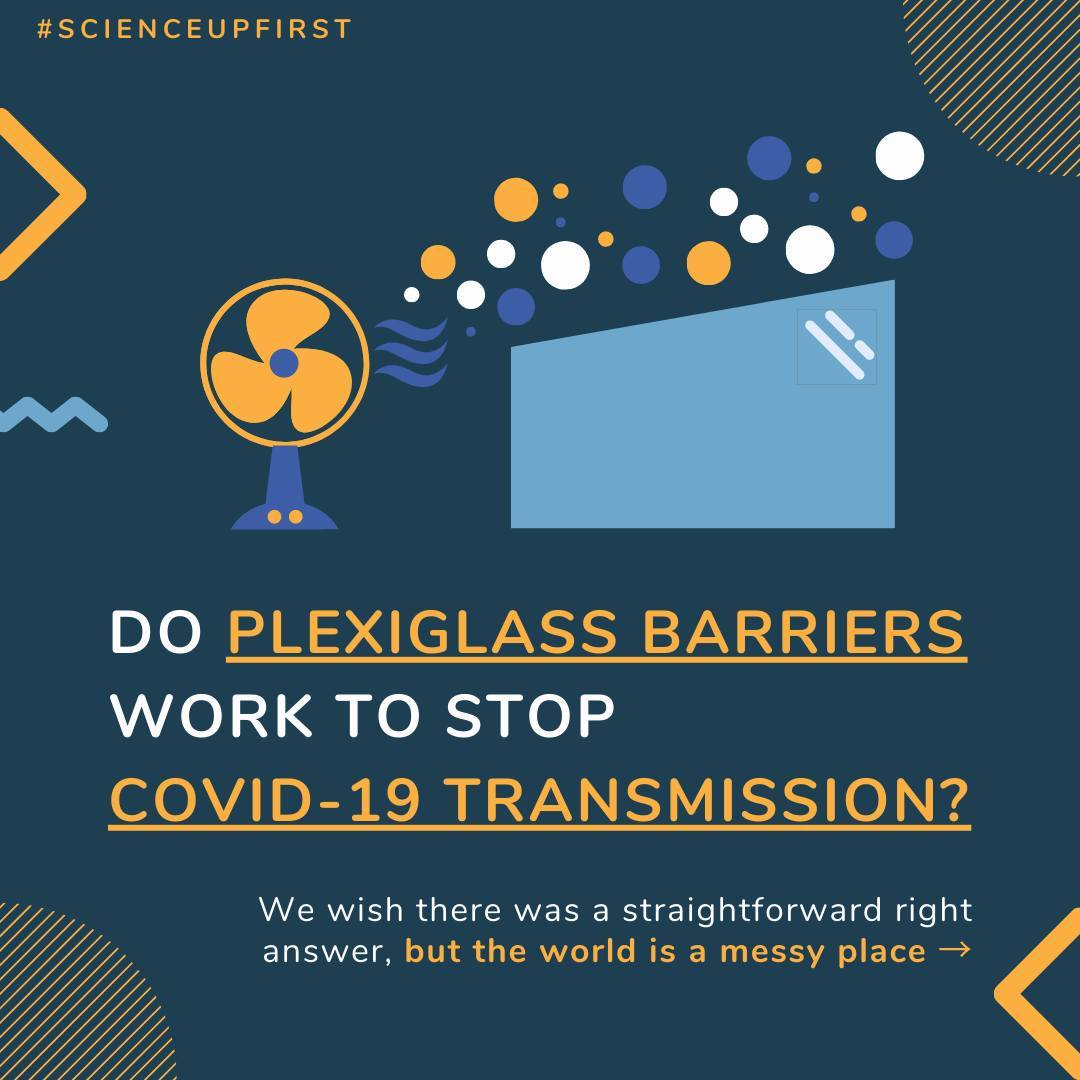
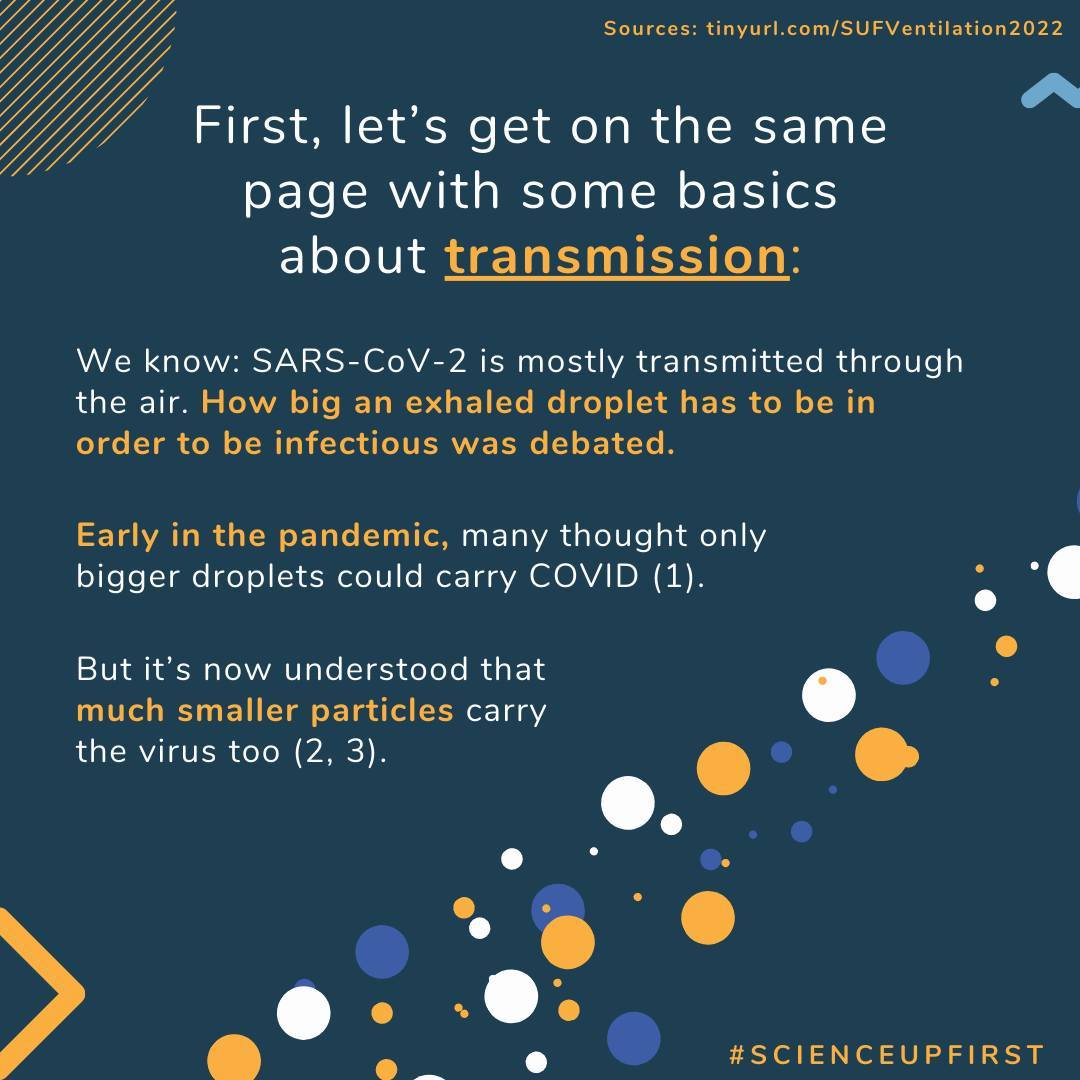
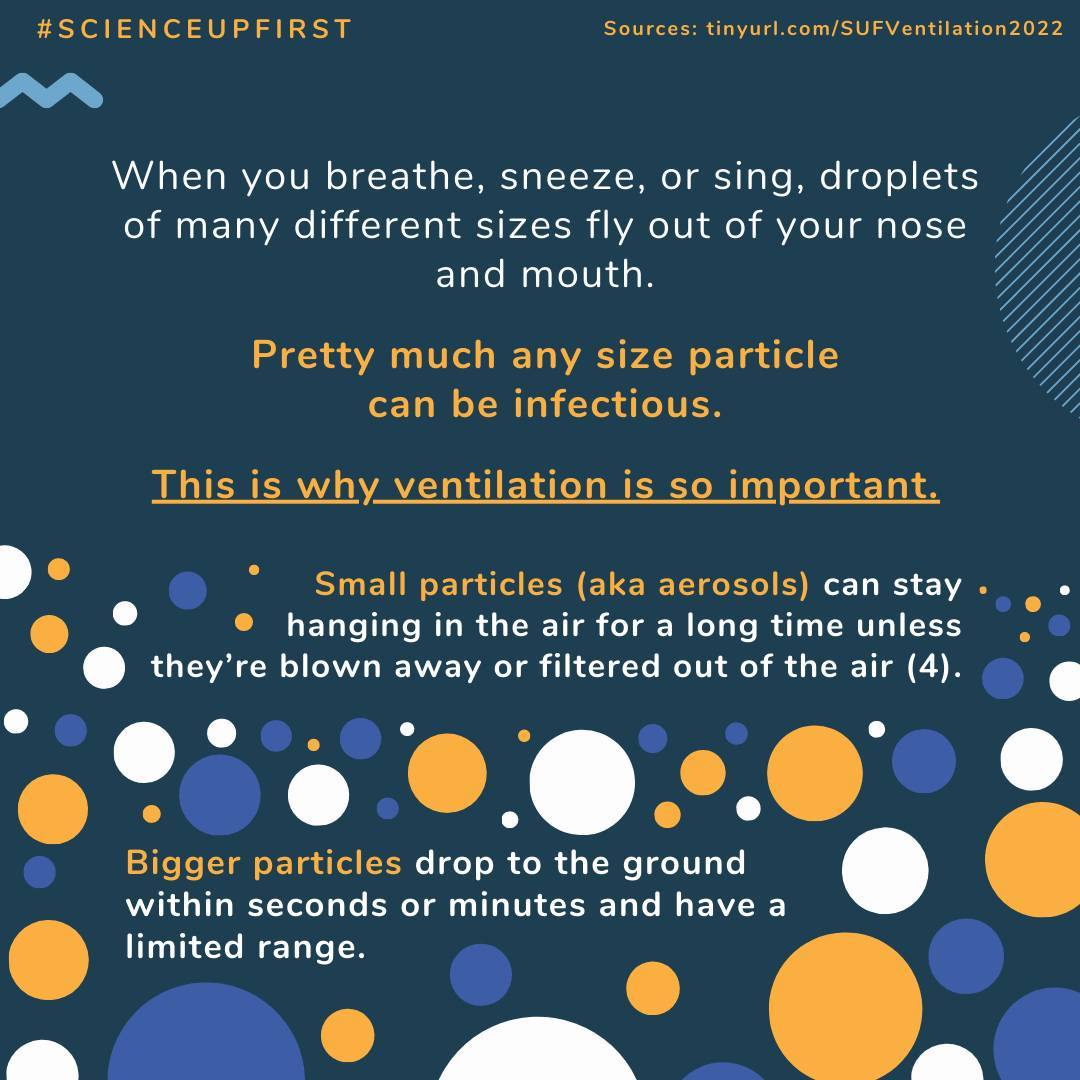
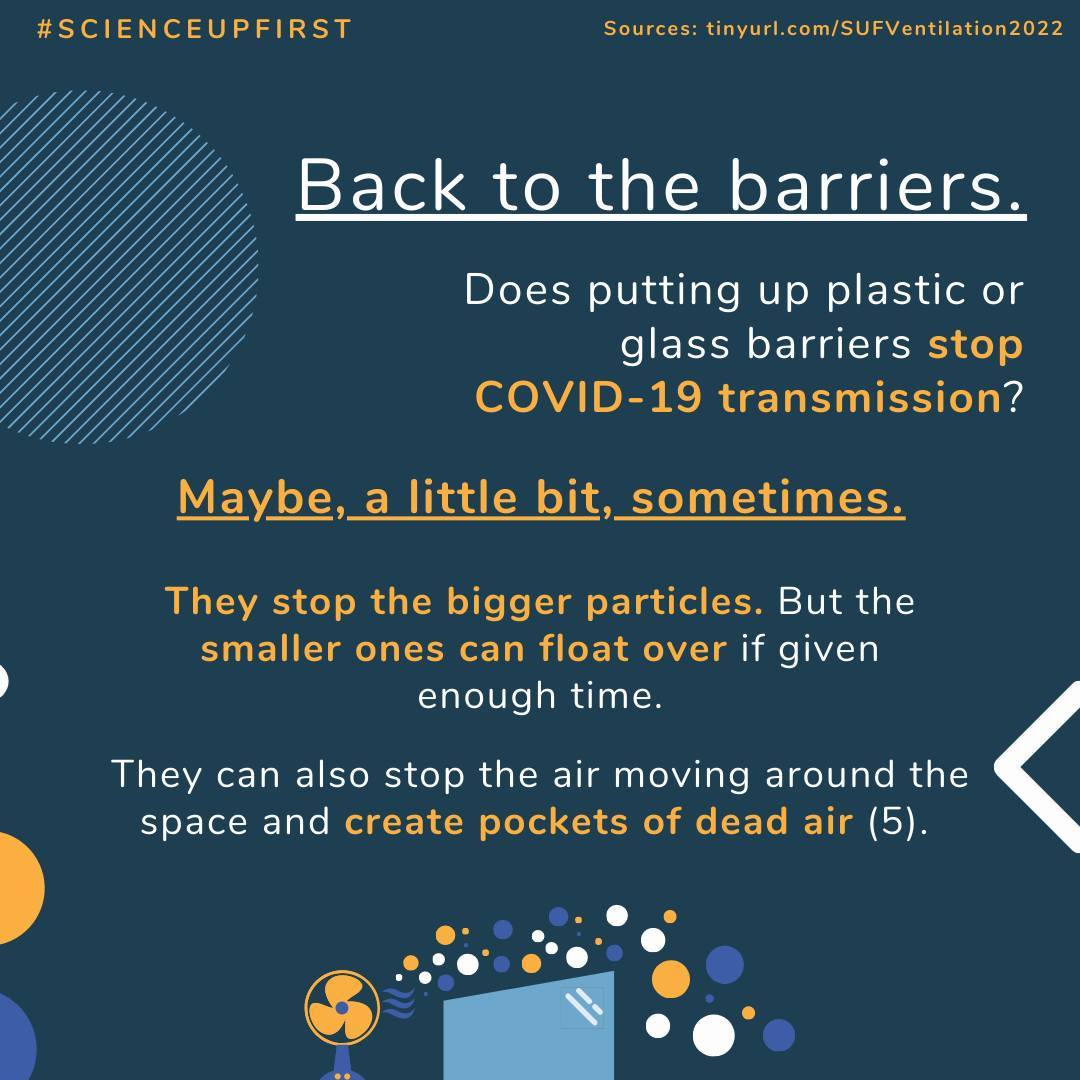
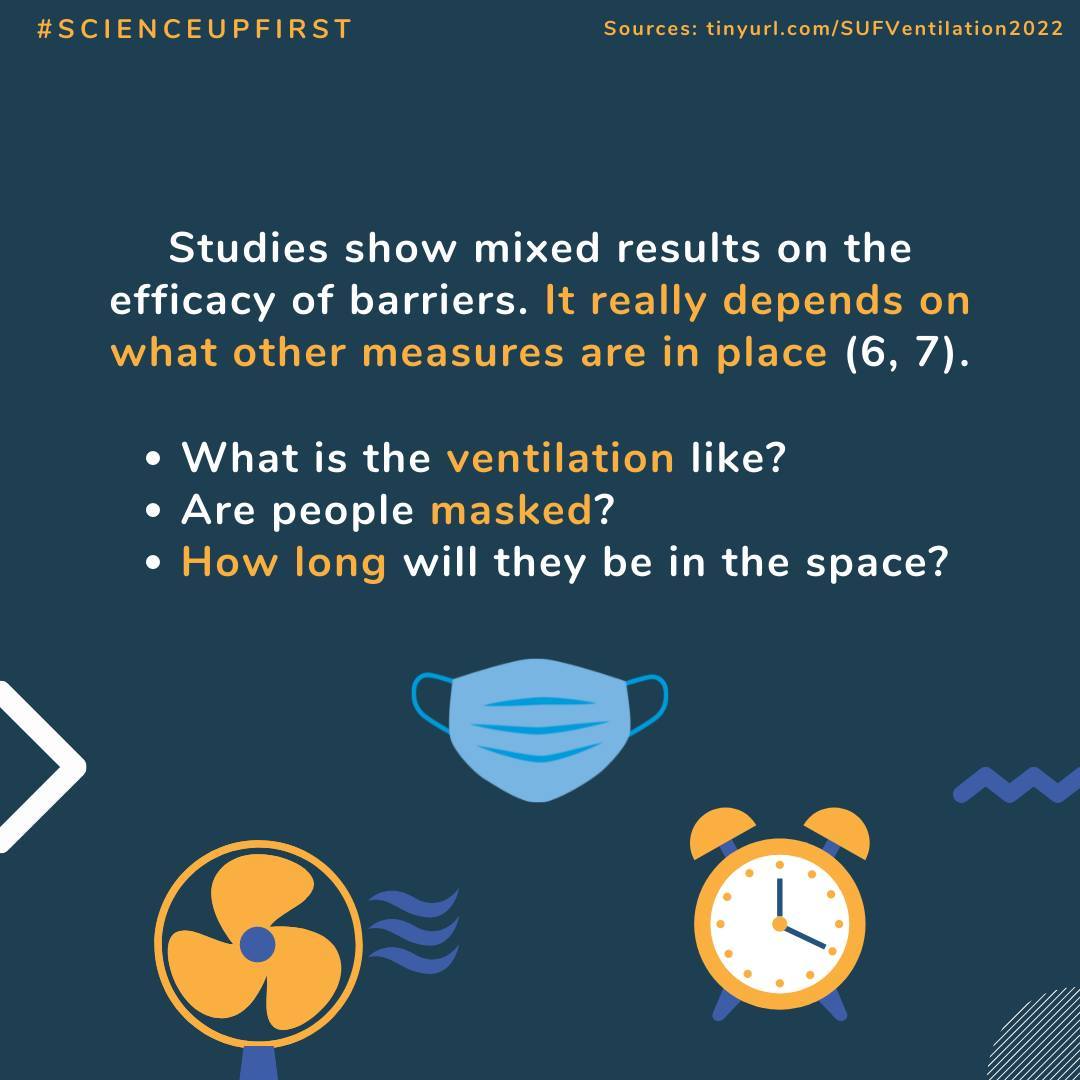
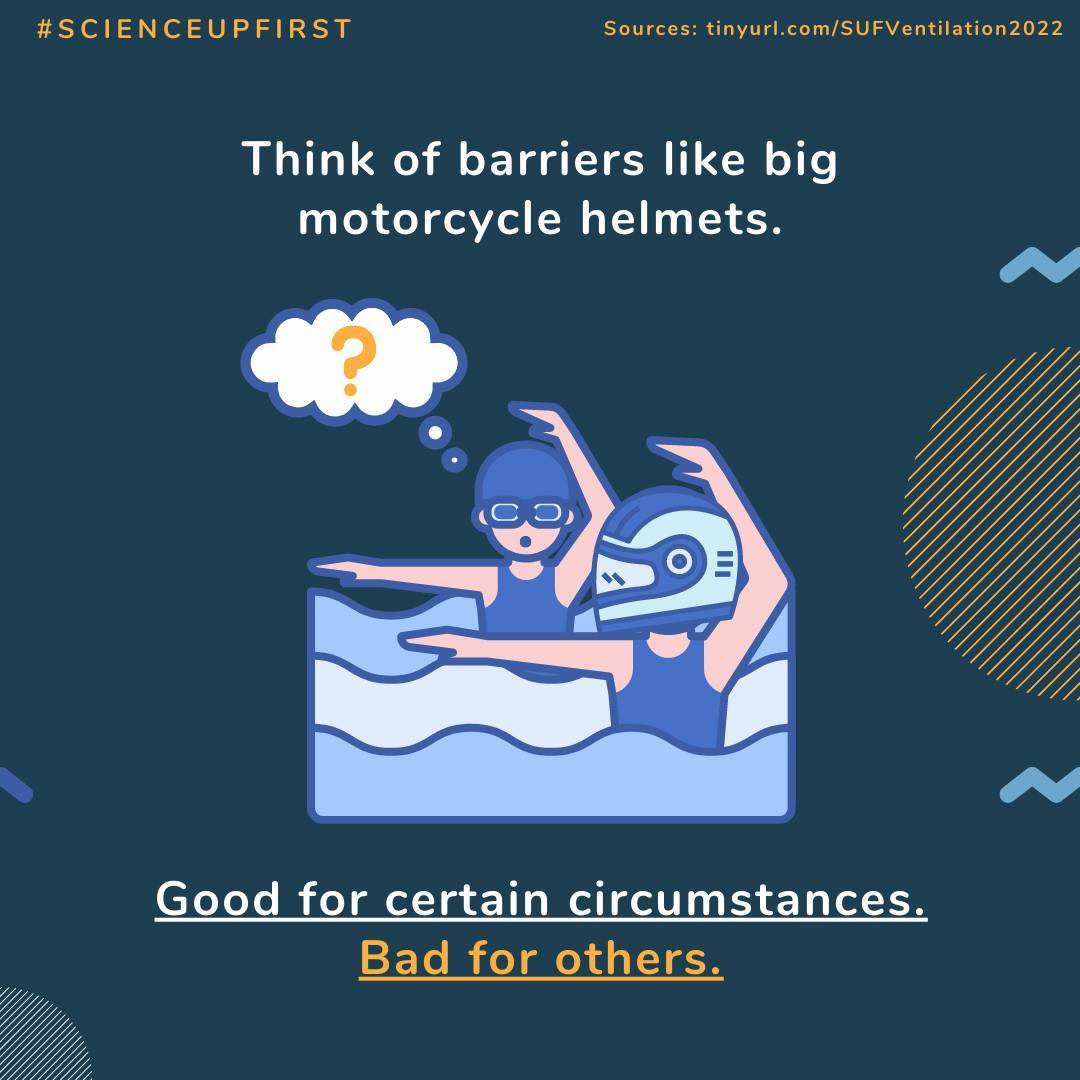


Plexiglass barriers – love ‘em or hate ‘em?
They sprung up almost immediately after the pandemic began, and they haven’t gone away. Even though our understanding of COVID-19 transmission has changed.
Do they work? Sometimes, maybe, a little bit.
Science can’t always give a straightforward *right* answer for all circumstances, and that’s OK. We dig into the nuance in this post.
Share our original Tweet!
You asked: “Do plexiglass barriers work to stop COVID-19 transmission?”
The answer is… maybe, a little bit.
We wish there was a straightforward *right* answer, but the world is a messy place. #ScienceUpFirst
[1/13] pic.twitter.com/dQ9S0a9y7R
— ScienceUpFirst | LaScienced’Abord (@ScienceUpFirst) June 2, 2022
View our original Instagram Post!
View this post on Instagram
- How did we get here: what are droplets and aerosols and how far do they go? A historical perspective on the transmission of respiratory infectious diseases
- Understanding transmission of SARS-CoV-2 in the ongoing COVID-19 pandemic | National Collaborating Centre for Environmental Health
- With COVID-19, Air Is Both the Problem and the Solution | Office for Science and Society – McGill University
- COVID-19: Main modes of transmission – Canada.ca
- Plexiglass can be ‘counterproductive’ to proper COVID-19 ventilation, experts say | CBC News
- A rapid review of the use of physical barriers in non-clinical settings and COVID-19 transmission | National Collaborating Centre for Environmental Health | NCCEH
- Why Anti-Covid Plastic Barriers May Make Things Worse – The New York Times

